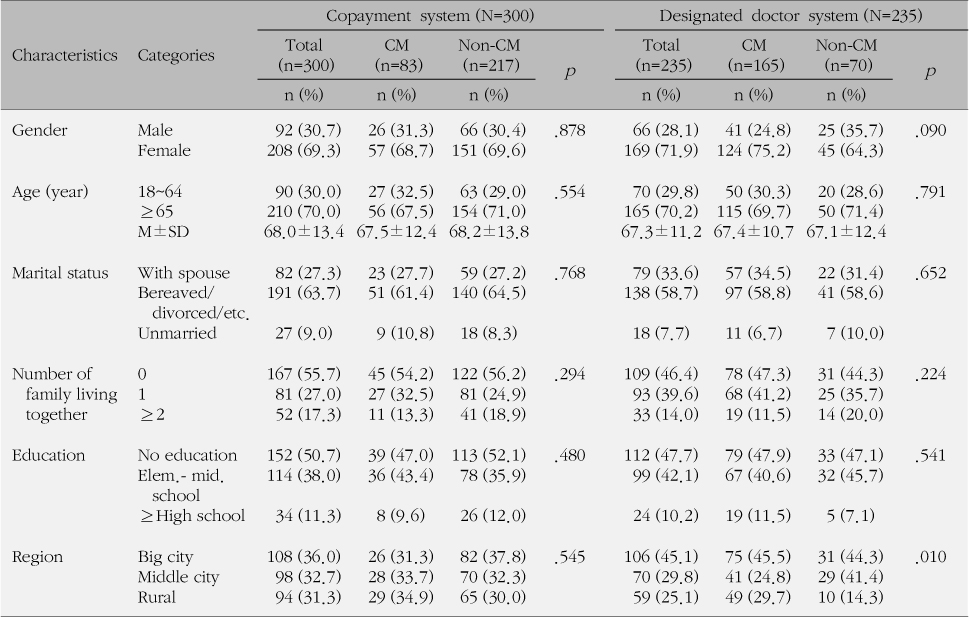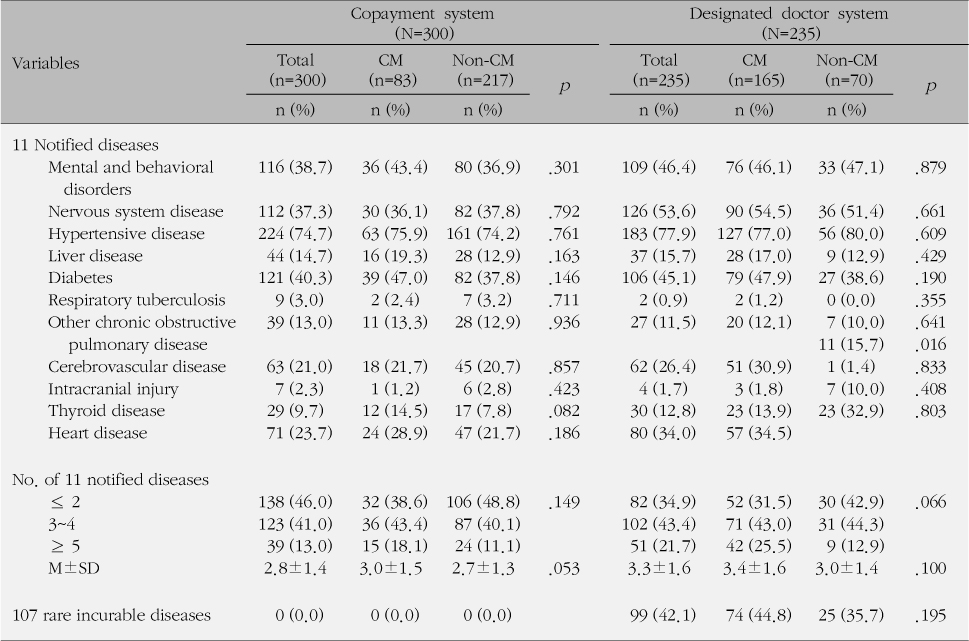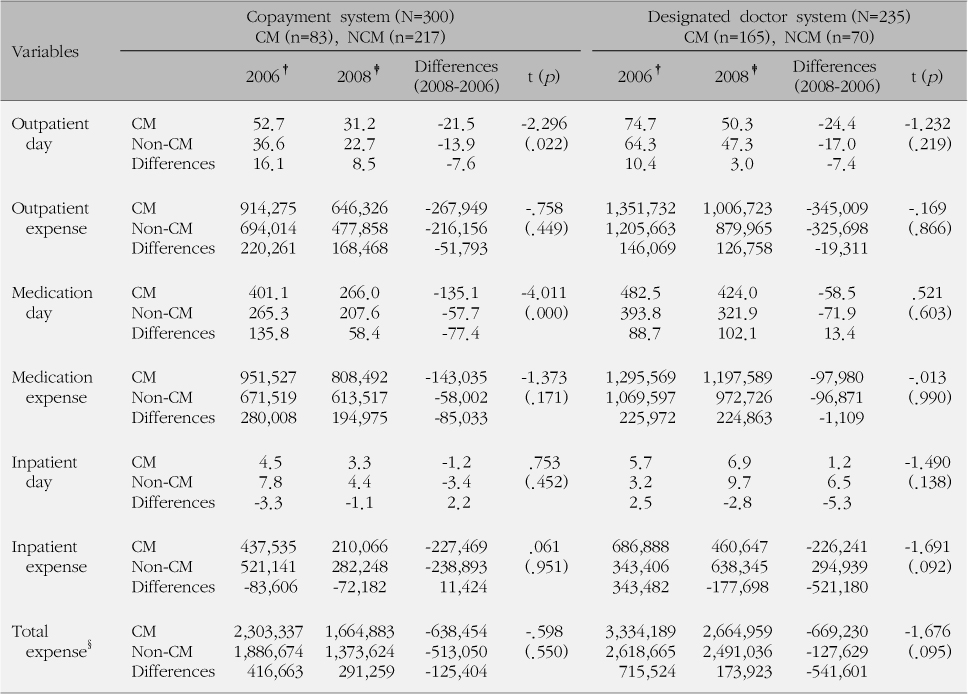References
1. Hong SW. The effects of copayments on healthcare utilization in the type I medicaid beneficiaries Seoul: Seoul National University; 2009. Unpublished doctor's thesis.
2. Jeon BY. Outcome and long-term and mid-term directions for development of the medicaid system. In : Moon OK, ed. Discussion on the outcome and development challenges of the medicaid system Symposium Conducted at the Meeting of Celebrating the 30th Anniversary of Korean Medicaid. Seoul, Korea; 2007. 11.
3. Kim SM. Utilization changes of hypertension patients according to the medical aid program types Incheon: Gachon University of Medicine and Science; 2009. Unpublished master's thesis.
4. Kim SR, Choi JS, Ju JS, Choi MY, Yang JH, Chae JM. The effect of office visit copayments on utilization among medicaid beneficiary in South Korea (K46-2008-82) Seoul: Health Insurance Review & Assessment Service; 2008.
5. Kim YO. Impacts of implementing outpatient cost-sharing system to medicaid type 1 recipient on the health utilization and expenditure Seoul: Yonsei University; 2008. Unpublished master's thesis.
6. Lee IS, Lee YR, Kang HG. Evaluation of case management for medicaid Seoul: Ministry of Health & Welfare, & Yonsei University; 2004.
8. Ministry of Health & Welfare. 2007 Guideline of medicaid management Seoul: Ministry of Health & Welfare; 2007b.
9. Ministry for Health, Welfare, & Family Affairs. 2008 Guideline of medicaid management Seoul: Ministry for Health, Welfare, & Family Affairs; 2008.
11. Oh JJ, Choi JM, Ji YG. Health services use and health status of medicaid beneficiaries according to medicaid policy change Seoul: Ministry of Health, Welfare and Family Affairs, Korea Human Resource Development Institute for Health and Welfare, & Dankook University; 2009.
12. Rhee WH. Developing a case management strategies program for a Korean medical aid clients Seoul: Hanyang University; 2006. Unpublished doctor's thesis.
13. Shin HW, Shin YS, Yun PK, Lee IJ, Lim SJ. Efficient managerial plan of medicaid expenditure. (2009-84) Seoul: Korea Institute for Health and Social Affairs; 2009.
14. Shin YA, Shin HC, Shin HW, Park EJ, Hong SW, Shin SM, et al. Health services use and health status of medicaid beneficiaries according to medicaid policy change Seoul: Ministry of Health, Welfare and Family Affairs, Korea Human Resource Development Institute for Health and Welfare, & Institute of Case Management for Medicaid; 2008.
15. Shin YS, Shin HW, Hwang DK, Rho IC. Monitoring for medicaid financial efficiency (2006-20-1) Seoul: Korea Institute for Health and Social Affairs; 2006.
16. Shin YS, Shin HW, Hwang DK. Effectiveness of case management for medicaid I (2007-17-2) Seoul: Korea Institute for Health and Social Affairs; 2007.
17. Taylor CB, Miller NH, Reilly KR, Greenwald G, Cunning D, Deeter A, et al. Evaluation of a nurse-care management system to improve outcomes in patients with complicated diabetes. Diabetes Care 2003;26(4):1058–1063.
18. Weinberger M, Oddone EZ, Henderson WG. Does increased access to primary care reduce hospital readmissions? Veterans Affairs Cooperative Study Group on Primary Care and Hospital Readmission. N Engl J Med 1996;334(22):1441–1447.
19. Yu WS. Outcome and long-term and mid-term directions for development of the Medicaid system. In : Moon OK, ed. Presentation on the outcome and development challenges of the medicaid system Symposium Conducted at the Meeting of Celebrating the 30th Anniversary of Korean Medicaid. Seoul, Korea; 2007. 11.


